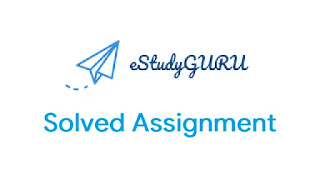
Animals are used for teaching purposes at various levels. The use of amphibians, small animals and large animals are common in paramedical schools, veterinary and medical colleges. The examples for alternatives include:
· Models instead of dissection to teach students the principles of Anatomy.
· Avoiding normal dissection of animals to see physiological parameters (e.g. students examining their own physiological parameters such as heart rate, vision or hearing).
Although not a replacement for dissection in a strict sense, this type of models/ exercises has the following benefits:
1) The alternatives are both educational and stimulating.
2) They do not involve the harming or killing of animals and have the added benefit of providing, albeit indirectly, a lesson in compassion.
3) Alternatives are durable and usually economical - even if initially expensive, most alternatives become highly cost-effective over time.
4) For some alternatives, students can use them repeatedly without incurring further costs.
5) Most importantly, alternatives are humane and welfare friendly.
6) They offer educators and students numerous ways to teach and learn, respectively, all types of information without harming or killing other beings.
The following are few examples of alternatives to animal usage in teaching at various levels.
1. Plastination
Plastination is the process of infiltrating specimens with synthetic materials. It is gaining ground over other methods. Plastination technique was pioneered by Dr. Gunther von Hagensat the Institute of Plastination in Heidelberg, Germanyin 1978. Dr. Gunther successfully plastinated human bodies in 1995 and attracted millions of curious visitors.
Gunther’s method involves replacing bodily fluids with forcible impregnation of acetone followed by silicone, epoxy or polyester copolymers under vacuum. Preserving a buffalo calf in formalin is expensive and costs nearly Rs. 20,000 (about $300) considering that six such specimens are required annually as teaching aids (Patel, et al., 2015). Therefore, plastination models are being used as low cost alternative methods to formalin preservation.
2. Flash Based Modules
The flash based modules are useful to the surgeons, pathologists and gynaecologists to refresh their knowledge on the interdisciplinary anatomical features. This will greatly enhance the efficiency in performing various surgical procedures. They also enhance the learning ability of students.
3. Models
A Model is a smaller or larger physical copy of an object or live animal. These physical models can be made up of rubber, plastic, fiber, Plaster of Paris or cement. These physical models offer 3D view to the observer.
i) Rubber Model
These convenient animal models can be used as alternatives in place of live animals to demonstrate some basic skills in veterinary courses, such as drug administration, suturing techniques in surgery, endotracheal intubation etc.
ii) Plastic Models
They provide visualization of anatomical features of some organs such as brain, eyes, ears, and heart, hence reducing the use of samples from live animals. These are affordable and available at the local market
iii) Wooden Models
Wooden replica of animals and their body parts are one of the cheap, readily available, and portable alternatives to animal handling in veterinary courses. Wooden body part replicas also minimize the frequent use of live animals as they can last longer from wear and tear as compared to rubberized counterparts.
iv) Low Cost Models
Using published pictures of animal or its internal organs, little of imagination and artistic inclination of student, they can make models of internal organs or even whole animal replica using papers, clay or styrofoam. Organ sculpturing can be made as a class activity to enhance understanding of students to particular anatomical features of organs as they sculpt using recyclable materials.
v) Wire Models
Using chicken wire mesh, these models can be shaped to produce a hump or the back portion of animal and they can be used as life-size dummy for rectal palpation. The wire mesh can be covered with old newspapers thoroughly soaked in glue and glue together, one layer after another. Once the mold is hardened, it can be painted to look like a cow’s hump. The inside organs such as the rectum can be made from rubber tubes with size enough to insert a hand and be able to palpate another structure that could be shaped as uterus.
vi) Specimens in Glass Containers
The use of animal replicas can also reduce the number of animals that need to be sacrificed in anatomy and physiology courses. Anatomy specimens are normally provided every year because the shelf life of the cadavers deteriorates. This can be due to improper storage of organ specimens after demonstration, hence the need for another animal to be sacrificed as specimen. Another means to preserve the specimen for longer period is by soaking the organs in 30% formalin solution for one month and placed in covered glass containers for another month without aeration. The resulting product will last for 3 years without sacrificing animals every semester. Though there is a problem of foul smell of these organs, however, after sometime, the formalin smell will also diminish.
4. Manikins
A mannequin (also called a manikin, dummy) is an often articulated doll used by artists, tailors, dressmakers, window dressers and others especially to display or fit clothing. The term is also used for life-sized dolls with simulated airways used in the teaching of first aid, advanced airway management skills such as tracheal intubation or animals used in computer simulation to model the behavior of the animal. These are sometimes also referred to as virtual patients.
5. Simulators
Medical simulators involve a computer connected to a plastic simulation of the relevant anatomy. Sophisticated simulators of this type employ a life size mannequin that responds to injected drugs and can be programmed to create simulations of life-threatening emergencies.



0 Comments